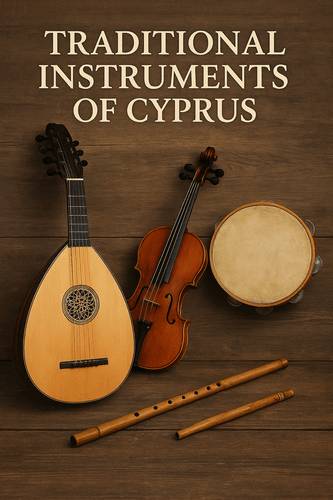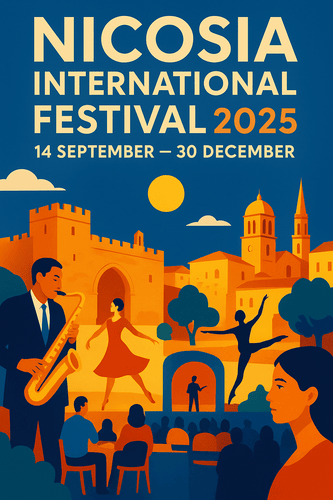Traditional instruments of Cyprus remain a vital link between history and daily life. They carry heritage, stories, and identity forward. Because of their role in cultural continuity, they are celebrated widely in performances, education, and festivals. Moreover, their melodies resonate across both villages and cities, strengthening community bonds.
Origins of Traditional Instruments of Cyprus
Traditional instruments of Cyprus developed from centuries of trade and cultural exchange. Therefore, they show influences from both East and West. Musicians blended these sounds with local customs, creating a unique heritage. As a result, the instruments became inseparable from weddings, rituals, and celebrations. Furthermore, each note preserves Cypriot resilience and cultural pride.
Laouto and Its Role in Cypriot Folk Music
The laouto, a pear-shaped lute, is central among traditional instruments of Cyprus. It provides rhythm, harmony, and structure. Because of its versatility, it supports singers, dancers, and storytellers. Moreover, it remains crucial in rural and urban performances. Therefore, the laouto symbolizes continuity and vitality in the Cypriot musical tradition.
Violin in Cyprus musical heritage
Although originally foreign, the violin became integrated with traditional instruments of Cyprus. It adds emotion to lively dances and heartfelt songs. Additionally, it blends seamlessly with the laouto and tambourine. Consequently, it reflects Cyprus’ openness to new musical ideas. Because of this adaptability, the violin remains a beloved part of the folk ensemble.
Tambourine and the Power of Rhythm
The tambourine, known as tamboutsia, adds rhythm to traditional instruments of Cyprus. Its jingling disks create energetic beats. Therefore, it enlivens weddings, festivals, and ceremonies. Moreover, its accessibility invites broad participation in music-making. Because of its simplicity, communities embrace it across generations. Consequently, it highlights shared joy and togetherness in cultural gatherings.
Pithkiavli folk instrument and Musical Traditions of Cyprus
The pithkiavli is a small wooden flute, deeply rooted in Cypriot history. It symbolizes ancient traditions within traditional instruments of Cyprus. Furthermore, it was often played by shepherds in rural areas. Because of its haunting tones, it evokes nostalgia and nature. Today, musicians revive it in concerts, workshops, and cultural festivals.
Other Cypriot Folk instruments Preserving Heritage
Besides these, the oud and frame drums enrich traditional instruments of Cyprus. They connect the island to wider Mediterranean culture. Additionally, they demonstrate Cyprus’ role as a cultural crossroads. Therefore, preserving them is essential for heritage. Musicians use these instruments to blend tradition with modern creativity, ensuring continuous relevance and pride.
Music, Festivals, and Cyprus Desserts
Traditional instruments of Cyprus always accompany cultural events. They combine with dance, storytelling, and shared cuisine. Interestingly, festivals pair lively melodies with beloved Cyprus desserts. Therefore, music and food together strengthen communal spirit. Moreover, this blend of arts reflects how Cypriot heritage unites senses, traditions, and memories in a single cultural experience.
Safeguarding Traditional Cypriot instruments
Educational programs, archives, and workshops ensure the survival of traditional instruments of Cyprus. Because of these efforts, young musicians learn ancient techniques. Moreover, researchers document oral traditions for future generations. Consequently, the island preserves authenticity while embracing innovation. As a result, Cypriot music continues as both historical memory and a living cultural treasure.



